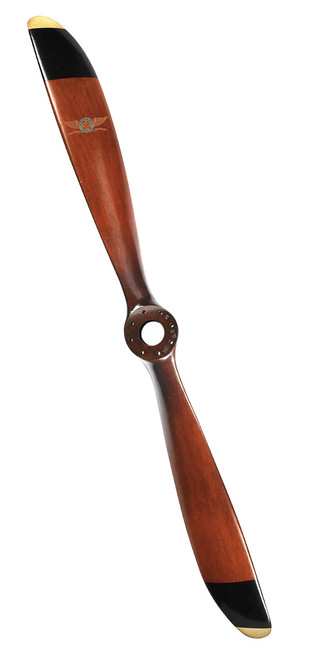TO SEE CLOSEUPS OF THE MODELS, MOVE YOUR MOUSE OVER THE PICTURE
Sopwith Camel Model Airplane, Large, Transparent
Dimensions: 39.75" Long x 58.5" Wingspan
This beautiful plane has transparent fabric stretched over a lightweight frame, spoke wheels, leather cockpit accents, brass and aluminum details, laminated propeller and historically correct colors. True craftsmanship. You will be amazed at the extent and quality in the detailing of this model.
*Free shipping for the lower 48 states
*To avoid any delays in your order, please contact us for the shipping cost to your location
*These are handmade in limited quantities. If you would like to confirm availability and see if any promotions may apply to your order, please contact us.
History: The Sopwith Camel was a British First World War single-seat biplane fighter aircraft introduced on the Western Front in 1917. It was developed by the Sopwith Aviation Company as a successor to the earlier Sopwith Pup and became one of the best known fighter aircraft of the war.
The Camel was powered by a single rotary engine and was armed with twin synchronized machine guns. Though proving difficult to handle, because of the close placement of the engine, pilot, guns and fuel tank (some 90% of the aircraft's weight) within the front seven feet of the aircraft and to the strong gyroscopic effect of the rotating mass of the cylinders common to rotary engines. It provided for a high level of maneuverability to an experienced pilot, an attribute which was highly valued in the type's principal use as a fighter aircraft. In total, Camel pilots have been credited with the shooting down of 1,294 enemy aircraft, more than any other Allied fighter of the conflict. Towards the end of the First World War, the type had also seen use as a ground-attack aircraft, partially due to it having become increasingly outclassed as the capabilities of fighter aircraft on both sides were rapidly advancing at that time.
The main variant of the Camel was designated as the F.1; several dedicated variants were built for a variety of roles, including the 2F.1 Ship's Camel, which was used for operating from the flight decks of aircraft carriers, the Comic night fighter variant, and the T.F.1, a dedicated 'trench fighter' that had been armored for the purpose of conducting ground attacks upon heavily defended enemy lines, by which point it was being outclassed in the air-to-air role by newer German fighters. . The Camel also saw use as a two-seat trainer aircraft. In January 1920, the last aircraft of the type were withdrawn from RAF service.









